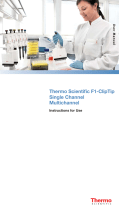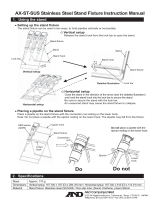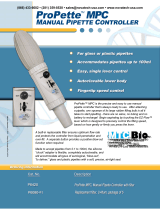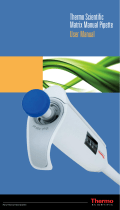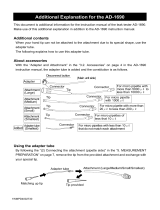3. Change the tip before aspirating a different liquid, sample, or reagent.
4. Change the tip if a droplet remains at the end of the tip from the previous pipetting operation.
5. Each new tip should be pre-rinsed with the liquid to be pipetted.
6. Liquid should never enter the tip holder; to prevent this:
○ press and release the push button slowly and smoothly,
○ never turn the pipette upside down,
○ never lay the pipette on its side when there is liquid in the tip.
7. If you use the same tip with a higher volume, pre-rinse the tip.
8. For volatile solvents you should saturate the air cushion in your pipette by aspirating and dispensing
the solvent repeatedly before aspirating the sample.
9. When the temperature of the liquid is different from the ambient temperature, pre-rinse the tip
several times before use.
10. You may remove the tip ejector (refer to Change the Tip Ejector on page 14) to aspirate from very
narrow tubes.
11. After pipetting acids or other corrosive liquids that emit vapors, remove the tip ejector and tip holder,
rinse with distilled water, dry, and lubricate the piston (refer to MAINTENANCE on page 14). For the
P1000L model, use a specific tip holder equipped with a filter to increase the lifetime of the piston
(refer to ACCESSORIES on page 11).
12. Do not pipette liquids with temperatures above 70°C or below 4°C. The pipette can be used between
+4°C and +40°C but the specifications may vary according to the temperature (refer to the ISO 8655-2
standard for conditions of use).
Chapter 5
ACCESSORIES
To make pipetting more comfortable and more secure, Gilson has developed several accessories:
SINGLE™
CARROUSEL™
TRIO™
COLORIS™
Universal Multichannel
Stand™
Corrosion protection kit
Pipette stands allow users to store pipettes vertically
to avoid the possibility of liquid running back into the
pipette.
DESCRIPTION P/N
CARROUSEL™ pipette stand (7 pipettes) F161401
TRIO™ stand (3 pipettes) F161405
Universal multichannel stand* F161417
Single™ pipette holder F161406
To identify or personalize your pipette, COLORIS™ clips
are available:
DESCRIPTION P/N
COLORIS™ clips (mixed colors set of 10) F161301
COLORIS clips (red, set of 10) F161302
COLORIS clips (yellow, set of 10) F161303
COLORIS clips (green, set of 10) F161304
COLORIS clips (blue, set of 10) F161305
COLORIS clips (white, set of 10) F161306
With The JIMMY™, a hands-free microtube opener, you
can open both snap-cap and screw-cap microtubes.
DESCRIPTION P/N
The JIMMY™ (set of 3) F144983
To protect the piston when pipetting corrosive liquids,
you can use a specific tip holder and filter for the
model P1000L:
DESCRIPTION P/N
Corrosion Protection Kit
(tip holder + a bag of 10 filters) F144570
Corrosion Protection Kit Filter (Bag of 10) F144571
Corrosion Protection Kit Filter (Bag of 50) F144572
* Universal multichannel stand is for multichannel models only.
Disposable Reagent Reservoirs are ideal for
dispensing reagent with multichannel pipettes:
DESCRIPTION P/N
REAGENT RESERVOIR 25 mL, x100 F267660
REAGENT RESERVOIR 50 mL, x100 F267670




















